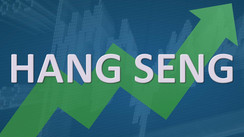The Essence of Direct Listings
In the intricate world of stock exchanges and public listings, direct listings have emerged as a transformative avenue. At its core, a direct listing is a mechanism that paves the way for private enterprises to showcase their shares on a stock exchange, thereby making them available for public trading. This is achieved without diving into the more conventional route of an Initial Public Offering (IPO). One of the standout features of direct listings is the immediate availability of the company's shares for buying and trading, right from the get-go.
Tracing back its lineage, the conventional wisdom was that only existing shareholders of a company could capitalize during a Direct Public Offering (DPO). Moreover, the company itself couldn't usher in new shares. However, in a decisive twist, December 2020 saw the Securities and Exchange Commission (SEC) endorsing a proposal by the New York Stock Exchange (NYSE). This greenlit the inclusion of freshly minted shares during a DPO, making it a game-changer.
Historically, direct listings were an anomaly, almost a needle in the haystack. This was largely due to the stringent conditions set by colossal exchanges, including NYSE and NASDAQ. Yet, the winds of change blew in 2018, tearing down these barriers. This reform unlocked the gates for tech giants, most notably Spotify and Slack. Both these firms capitalized on this newfound avenue, with Spotify making its stock market entry in April 2018 and Slack following suit in June 2019.
Alternate term: Direct Public Offering (DPO)
A Deep Dive into the Direct Listing Process
Embarking on a direct listing is akin to setting sail on a meticulously charted voyage. It invariably begins with a company roping in a seasoned financial advisor. Investment banks often don the hat of these advisors, guiding the company through the choppy waters of stock market listing.
Beyond the superficial understanding, the direct listing process is an amalgamation of regulatory alignments, strategic communication with potential investors, price discovery, and eventually, the stock's unveiling on the exchange platform. Spotify's journey provides a perfect blueprint to understand these layers.
Inside Spotify’s Direct Listing Chronicle
The timeline of Spotify's direct listing odyssey is an intriguing tale. Back in May 2017, Spotify knocked on the doors of Latham & Watkins, sowing the seeds of its direct listing ambition. This period also saw them enlisting the expertise of financial stalwarts: Goldman Sachs, Morgan Stanley, and Allen & Co.
The role of these financial maestros cannot be understated. They steered Spotify through the labyrinth of listing objectives, regulatory nuances, and orchestrated strategic communications tailored for the public eye. They also undertook the vital task of evaluating the worth of shares, especially those beyond the grip of the company's inner circle. Such an evaluation forms the bedrock for meeting stock exchange listing standards.
Interactions and negotiations with the SEC spanned several months of 2017. But, the real momentum was felt when Spotify unfurled its maiden direct listing document in February 2018, only to follow it up with another disclosure in March.
The subsequent phases of a DPO are intricate. It involves a symphony of regulatory alignments, checks, and balances, capped off with an informational seminar for the potential investors. Drawing parallels from Spotify, they hosted an enlightening Investor Day on March 15, 2018. Barely a few weeks later, on April 3, 2018, they received the much-coveted nod from the SEC.
As the curtains rise on the listing day, it's a collaborative ballet between the financial advisor and the exchange's designated market maker. Together, they chisel out the initial reference price. For Spotify, this responsibility fell upon Morgan Stanley. This reference price, often perceived as the north star, is sculpted by market demand. Using Spotify's example, the reference price was rooted at $132 per share. Yet, when the gavel dropped on April 3, 2018, the shares sprang to life at a robust $165.90.
Direct Listings and IPOs: The Grand Face-off
On the surface, both DPOs and IPOs seem to converge at the same destination: offering a conduit for private entities to grace the stock market. Yet, the journey is riddled with contrasts.
-
Share Type: IPOs often usher in a mix of old and new shares, potentially diluting the shareholding pie for existing stakeholders. In contrast, direct listings, especially those before December 2020, predominantly featured old shares.
-
Share Buyers: IPOs come with a veneer of exclusivity, with share allotments often skewing towards institutional investors. Direct listings democratize this, making shares accessible to all via the stock exchange.
-
Role of the Investment Bank: In IPOs, these banks bridge the chasm between enterprises and investors, while in direct listings, their role is largely advisory.
-
Share Pricing: While IPOs see banks and companies deliberating on the initial share price, direct listings rely on market makers, who anchor their decision on market demand.
-
Investor Engagements: IPOs play host to exclusive investor roadshows, a privilege often reserved for the bigwigs. Direct listings, on the other hand, host inclusive online seminars, throwing open the doors to all interested parties.
Direct Listings Through the Lens of Individual Investors
For the legion of average investors, direct listings are a beacon of hope. Traditional IPOs often place institutional investors on a pedestal, sidelining the regular investors. But direct listings level this skewed playing field.
Key Point: Traditional IPOs, driven by their roadshow model, often leave retail investors chasing shadows. In stark contrast, direct listings usher in transparency. Here, every investor, irrespective of their stature, gets a fair shot at the shares. This involves simply placing an order through regular stock trading platforms, be it a seasoned brokerage or a fledgling app.
One must also laud the inclusive investor days hosted by companies venturing into direct listings. These sessions provide an unfiltered lens for retail investors, letting them walk shoulder to shoulder with institutional giants.
Final Thoughts:
- Direct listings, with their innovative approach, are reshaping the contours of stock market entries for private firms.
- While IPOs and direct listings aim for a similar endgame, their strategic blueprints are poles apart.
- Post the pivotal December 2020 shift, direct listings now welcome both old and fresh shares.
- Everyday investors, often marginalized in IPOs, find themselves in the driver's seat with direct listings.





